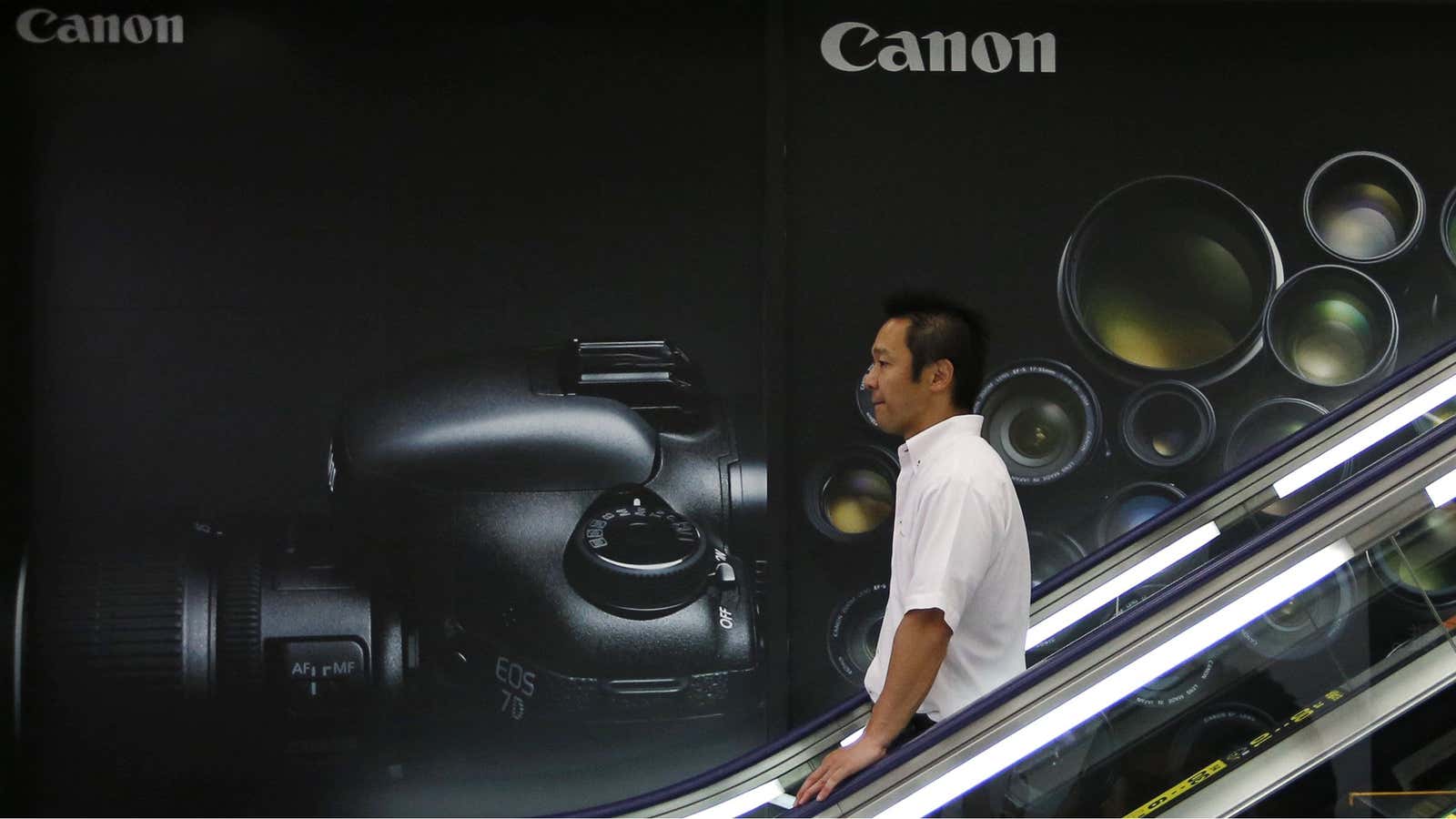The best camera, experienced photographers say, is the one that’s with you—and the truth of that adage is spelling doom for many of the world’s camera brands, who are desperately trying to stay afloat as their businesses are eroded by the omnipresent smartphone.
The average point-and-shoot has already essentially been surpassed by the sophisticated cameras within smartphones like the iPhone and Samsung Galaxy, especially as those also let you effortlessly edit photos and share them on social networks. Sales of compact digital cameras were down about 40% in 2013.
To stay ahead, the Japanese firms that dominate the camera industry created a new category to occupy a niche above the compacts and smartphones and below the expensive, bulky single-lens-reflex (SLR) cameras used by many serious photographers. These mirrorless cameras—here’s a round-up of current models—have interchangeable lenses as SLRs do (albeit with a smaller variety of lenses), but are smaller and cheaper.
But while mirrorless cameras take beautiful photos and have been mostly hailed by camera enthusiasts, as a business their prospects have been less stellar. What happened to compact cameras is starting to happen to them too: As smartphones keep getting better, customers are starting to value their connectivity over the mirrorless cameras’ shrinking advantage in image quality.
The mid-tier Japanese manufacturers, Panasonic, Olympus and Fujifilm, have especially been feeling the pinch. All three are losing money on their camera divisions, though Olympus said this week that its unit would return to profitability next year. Credit Suisse imaging analyst Yu Yoshida told Reuters that only high-end specialists Canon and Nikon, along with the much larger Sony, are likely to survive the shake-out.
Photographer Craig Mod wrote this week in the New Yorker about his journey from a film camera to a digital SLR to a mirrorless camera, and the piece ended with his admission that his iPhone5 is now often his preferred photographic tool of choice. “In the same way that the transition from film to digital is now taken for granted, the shift from cameras to networked devices with lenses should be obvious,” Mod wrote.
But manufacturers, as yet undeterred, are still trying to create new categories that straddle the camera and the phone. Samsung yesterday unveiled the latest version of its Galaxy Camera, which runs the Android operating system and does everything else a smartphone does except make calls. From the other side of the divide, Sony, which makes its own mirrorless compact cameras as well as components for other manufacturers and its own line of smartphones, is marketing its QX devices—disembodied lenses and image sensors that attach to a smartphone. Reviews have been mixed, but Sony is reportedly encouraged by stronger-than-expected sales. Even if the camera is destined for niche status along with the record player, maybe “networked devices with lenses” aren’t quite the end of the road either.
